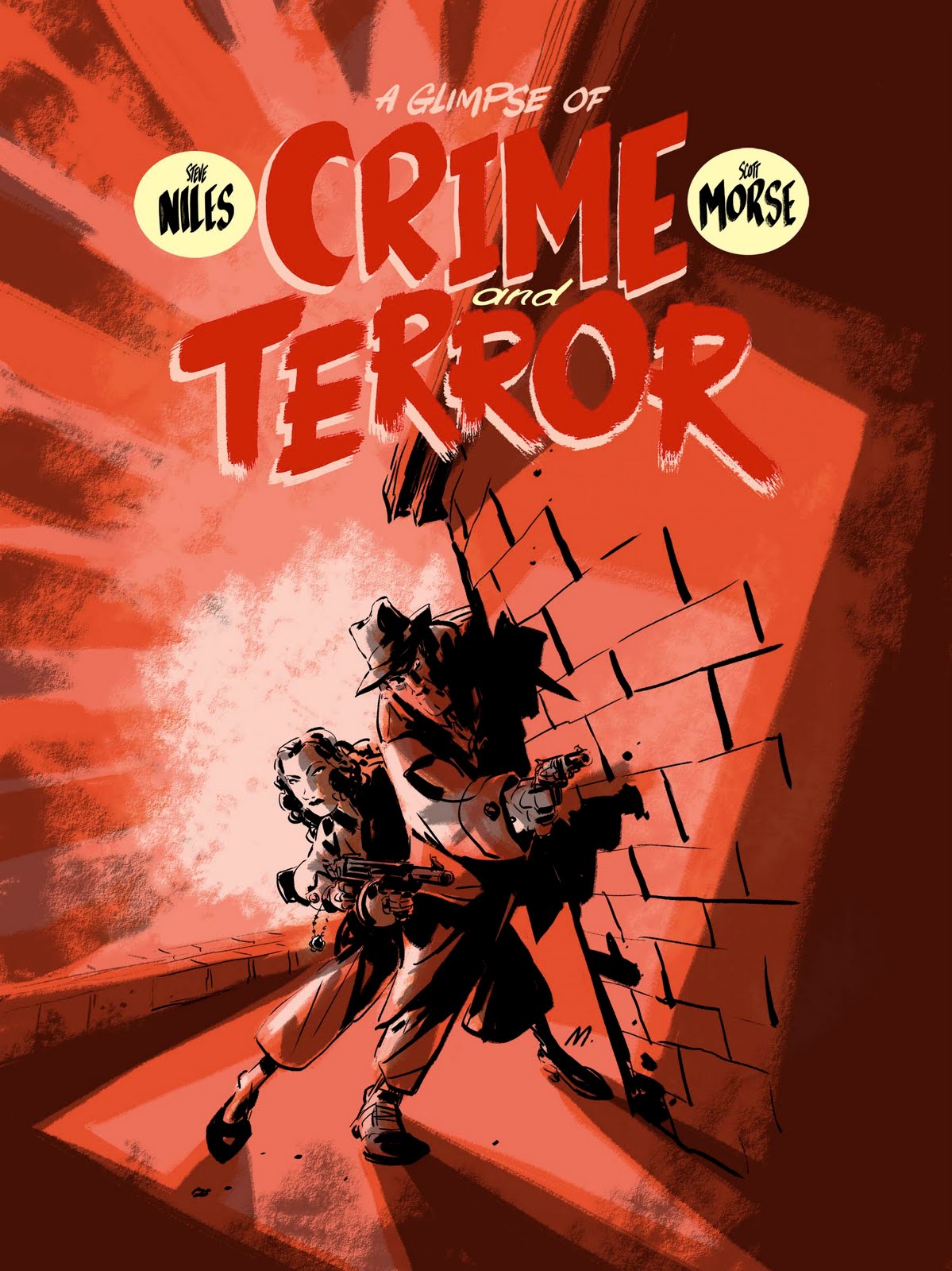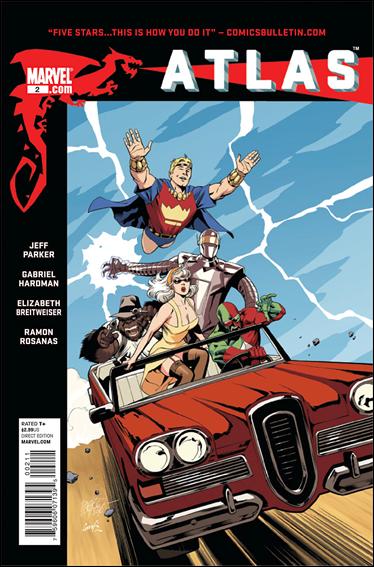The comic book movies I really love (the first Superman, the first Spider-Man, the first Iron Man, The Dark Knight) always send me back to the comics, and Captain America: The First Avenger was no exception. A faithful translation of a four-colour hero’s adventure leaves me jazzed about that character, and reminds me why I like ‘em in the first place. With that in mind, I decided to compile my five favourite Captain America moments from the comics. Keep in mind, these aren’t intended to be the best Cap moments, by any means—just the ones that always stuck in my mind and made him a favourite character of mine since I was a kid. They’re kind of odd choices—they’re not particularly exciting or badass or cool, in many cases. In at least one, they’re downright embarrassing. Still, I think that the basic elements of these scenes, which have always stayed with me for one reason or another, add up to help round out Cap as a standout character for me. So…
If It Ain’t Supposed To Be Broke, Then Fix It (From Marvel Super Heroes Secret Wars #12)
In the penultimate chapter of Marvel’s first big ensemble maxiseries, a Beyonder-powered Doctor Doom blasted all of the superheroes to bits with a bolt from the blue. However, in the series’ final chapter, Doom accidentally revived the heroes (with a little bit of subliminal suggestion from a Beyonder-possessed Klaw), and the good guys triumphed in the end. Unfortunately, Captain America’s prized shield was shattered by the blast that (temporarily) killed everybody, but that didn’t stop the Star-Spangled Avenger from leading everyone into battle with its fragmented remains. Anyway, as the heroes prepared to return home, they noticed that there were still some residual side effects of the Beyonder’s cosmic powers floating around—side effects that included paranormal wish fulfillment, like Spider-Man being able to restore Dr. Curt Conners from the dead. Cap decided to try and use some of this power to try and restore his most trusted asset from oblivion…


I love this whole sequence—the emotion Cap feels for an inanimate hunk of metal always got to me, even as an eleven-year old. And I love the look of sheer joy on his face when the shield is magically repaired.
Old Soldier (From Daredevil Vol. 1 #233)
The Born Again arc from Frank Miller and David Mazzuchelli’s run on Daredevil is the gold standard by which I’ve always judged every DD run that’s come after it. It’s never been matched for storytelling power, grit, or just plain coolness ever since. But one of my favourite aspects of it is its treatment of Cap, who is never actually referred to by name in any of his appearances, and is simply called “the soldier” in the narrative captions. In this series, the Kingpin unleashes a maniacal washout from a failed super-soldier program—the drug-addled lunatic called Nuke—on Hell’s Kitchen, trying to flush out Daredevil. Nuke is defeated, but questions about his origin linger, and Captain America decides to investigate. Looking for Daredevil, he finds his alter ego Matt Murdock instead, who urges him to ask his bosses in Washington about where Nuke came from.

This last panel is such a beautifully short and simple distillation of Cap’s entire character—his idealism, how out of place he feels in today’s world—and it’s done with such a simple image and so few words.
3. Red, White, and Blue Movie (From Incredible Hulk Vol. 1#417)
It’s perennial Marvel sidekick Rick Jones’ bachelor party, so with most of the Avengers and the Fantastic Four (plus numerous other heroes to boot), you know it’s gonna get crazy! Nick Fury kicks off the night by sending a stripper, then the gang settles in to watch a nudie flick. The Vision, like all good nerds, insists on running the projector…

…then he busts Cap for covering his eyes!

Stands to reason that the Marvel Universe’s biggest boy scout would feel embarrassed to be watching a dirty movie…although not as embarrassed as Rick Jones, when he discovers that the star of said movie is his bride-to-be, Marlo! But that’s another story.
Thanks For The Memories (From Avengers Vol. 1 #277)
I’ve written at length here before about my love for the Under Siege storyline from Roger Stern’s outstanding Avengers run. In it, Baron Zemo and his latest incarnation of the Masters Of Evil take over Avengers Mansion, holding several team members hostage while brutalizing others (Hercules is beaten into a coma by the Masters’ biggest bruisers, while poor Jarvis is tortured half to death by Mister Hyde). As always, the Avengers turn the tide and take the Mansion back from Zemo and his goons, but not before they’ve taken the time to trash a bunch of the heroes’ personal effects…including most of Cap’s pre-WWII memorabilia, like his original triangular shield and the only photo he has of his mother.

Man. What a bunch of jerks. Like the Daredevil appearance noted above, this one always drove home the pathos of Cap for me, and immeasurably deepened him as a character.
Sargasso? (From Avengers Vol. 1 #154)
This particular Avengers issue sticks out in my mind as being one of the first comic books I ever owned as a kid, so it obviously already has great meaning for me. It’s a pretty killer issue, starting off with the Vision being taken captive by a bunch of Atlantean renegades, and ending with their ally Tyrak the Treacherous invading Avengers Mansion (notice a theme here?) disguised as the Inhuman known as Triton. Scarlett Witch sees through his disguise, and all hell breaks loose. Unfortunately for Earth’s Mightiest Heroes, Tyrak is able to make short work of them—he takes out the Witch, Yellowjacket, and the Wasp with knockout gas, crushes Iron Man’s power pack (which renders his armor useless)…but that’s when Cap steps up to the plate, delivering this memorably salty line of dialogue:

Wow, only the Living Legend of World War II could spit that out with a straight face. And he means it, too! That is a guy I want on my side. Too bad Tyrak drops a wall on him a second later—only the Beast escapes to bring reinforcements for next issue’s rematch.
So there you have it. I’m not sure why none of these scenes are actually from Cap’s own title—there are certainly lots of great moments to be found there—but these are, as I said, the ones that always stayed with me. And if you don’t like ‘em, feel free to shove them up your Sargasso…whatever the heck that means.































